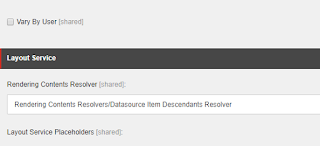Solution upgrade from Sitecore 9.01 to Sitecore 9.3
Recently I was involved in upgrading a Sitecore 9.01 solution to Sitecore 9.3. This was a Sitecore JSS based solution and it was quiet an interesting journey, so I decided to share with you some of the steps I needed to take to make this happen. Maybe you will run into the same thing. Sitecore databases For development environments in upgrade scenario's, my preference is always to start with a clean vanilla instance of the target Sitecore version. So I started by installing Sitecore 9.3. For an XP Single setup I could use the new Sitecore Installation Assistant with the graphical wizard to set it up. This went very smoothly after I made sure of the right prerequisites like SQL version etc. I would then proceed in upgrading my solution, and deploy it to this instance and serialize the custom Sitecore items with Unicorn after the initial deployment. Visual Studio project updates One of the changes that took most of my time was switching from 'traditional' nuget pack...
